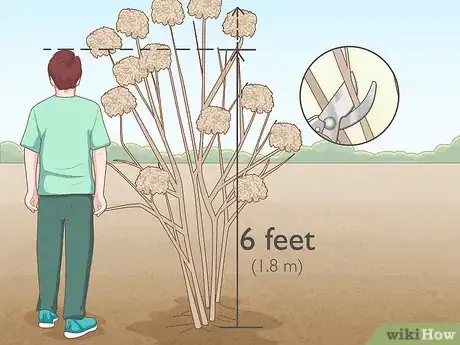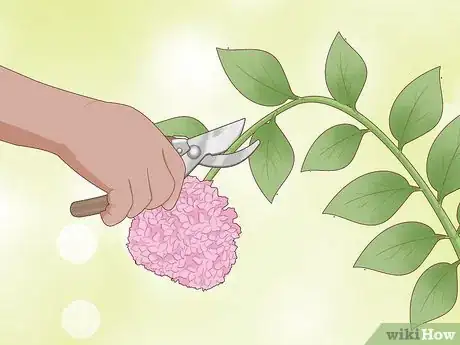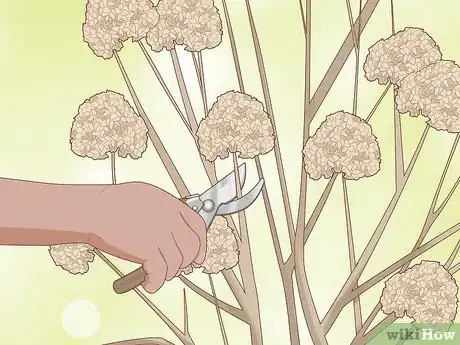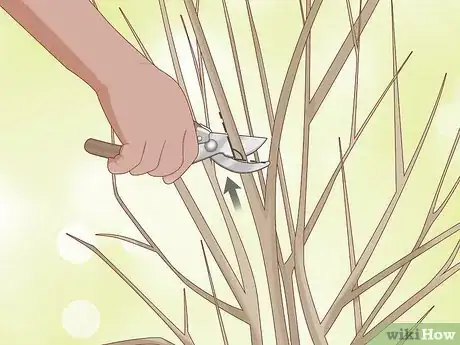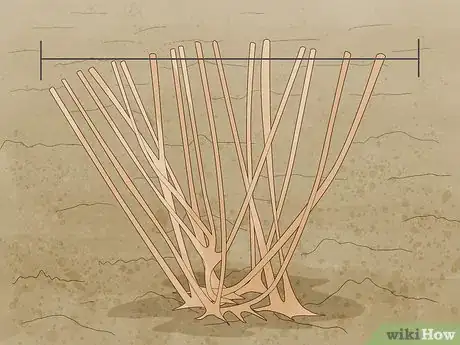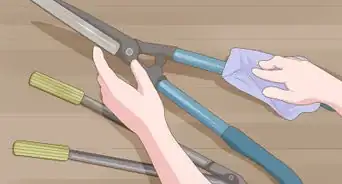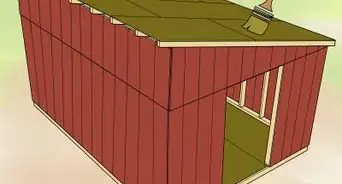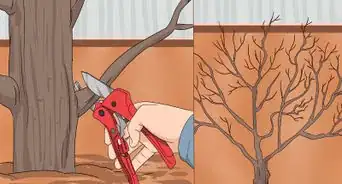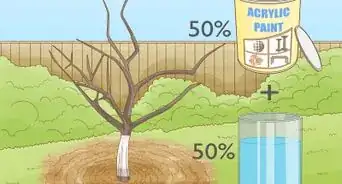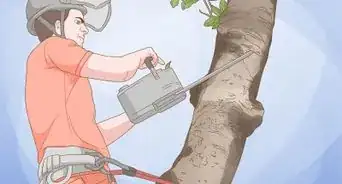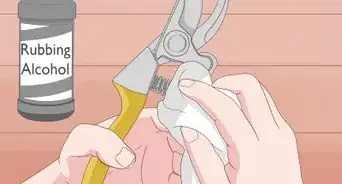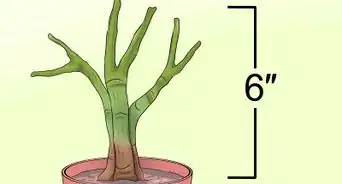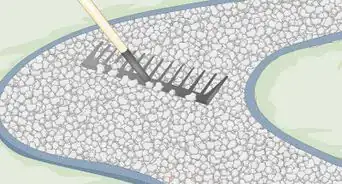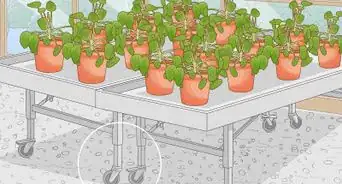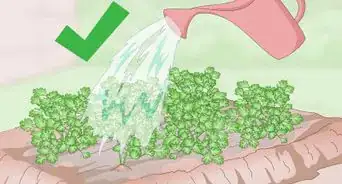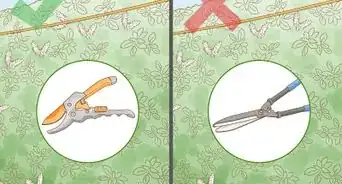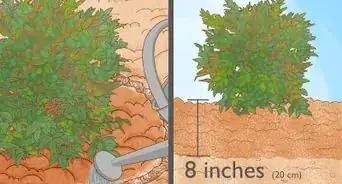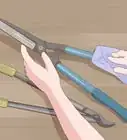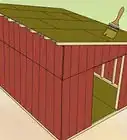This article was co-authored by wikiHow staff writer, Hannah Madden. Hannah Madden is a writer, editor, and artist currently living in Portland, Oregon. In 2018, she graduated from Portland State University with a B.S. in Environmental Studies. Hannah enjoys writing articles about conservation, sustainability, and eco-friendly products. When she isn’t writing, you can find Hannah working on hand embroidery projects and listening to music.
There are 9 references cited in this article, which can be found at the bottom of the page.
This article has been viewed 64,063 times.
Learn more...
Limelight hydrangeas are a type of woody hydrangea that bloom in the spring. They produce large flowers that are notorious for their football shape and their rich coloring. Limelight hydrangeas are a beautiful addition to your yard or landscape, and if you have them, you might be wondering how to take care of them. All you have to do is cut your hydrangea back when it is getting too big, remove all your dead flower heads, and thin out your plant, and you’ll be pruning your limelight hydrangea like a professional.
Steps
Deciding When to Prune
-
1Prune in late winter/early spring when your plant is winterized. You can prune limelight hydrangeas at any time of the year, because they are hearty plants. However, it is easiest to prune them in the late winter or early spring, because all of the leaves will have fallen off and you will be able to see and access the branches easily.[1]
Tip: When you prune in the late winter/early spring, you can cut your plant before it blooms and control how many flowers it gets.
-
2Cut your hydrangea when it is getting too big for your space. You may have planted your hydrangea with a designated area in mind for it to grow. Limelight hydrangeas can grow up to 6 feet (1.8 m) tall, so you might have to cut them back if they outgrow their space.[2]
- Hydrangeas are hearty plants, so cutting them back won’t hurt them. In fact, it helps them grow bigger and faster.
Advertisement -
3Trim your hydrangea if the flowers make the branches droop. Sometimes, limelight hydrangeas will produce so many flowers that their branches can’t hold all of the weight. You might notice that your plant’s branches are sagging, or the overall shape of the hydrangea is droopy. This means you should probably thin it out.[3]
- Hydrangea flowers are usually fairly large, and they can hold on to a lot of water during the rainy season. This makes them especially heavy.
Trimming Your Plant
-
1Sanitize your pruners before starting. When you cut parts of a plant, you are leaving it vulnerable to infection. Clean your pruning tool with a mixture of water and soap in a bucket to quickly sanitize your tool. You don’t have to spend a lot of time on this step, but make sure your pruners are clean before you start cutting.[4]
- You can buy hand pruners at most hardware or home improvement stores.
-
2Cut off all the old flower heads. Your hydrangea will still have its old flowers on it from the previous year’s bloom. These flowers are dead, as you’ll probably be able to tell by their color and dried out feel. Start by cutting these flower heads off at their base.[5]
Tip: Cut off some flowers during the spring to make a beautiful bouquet. Cutting off flowers while they are blooming won’t hurt your plant.
-
3Clip branches above nodes at an angle. Look for the nodes on the branches of your hydrangea. These will look like two small bumps next to each other. The nodes are what create new growth. Clip right above those so that they stay on your plant and make it easier for it to create new branches. Always clip at an angle so that water doesn’t pool on top of where you cut.[6]
- If the nodes are hard to see, use your fingers to feel for two pin-head sized bumps that are side by side.
-
4Cut the hydrangea down to half its size to keep it small. If you’d like to stop your hydrangea from getting too big, you can cut it down to half of its size. Limelight hydrangeas in particular are great at coming back from huge chops, and your plant will have no problem recovering from being cut down like this.[7]
- Don’t cut your hydrangea shorter than 18 inches (46 cm) above the ground. Any shorter, and it might be too hard for your plant to grow back.
-
5Cut off long branches to make it look uniform. If you’d like your plant to grow in a more uniform manner, you can cut off any long or straggling branches that are sticking out and making it look messy. Simply cut them down to where they are even with the rest of the branches.[8]
- Pruning like this is entirely up to your stylistic discretion. You can choose to shape your hydrangea however you’d like. Just remember that it will grow leaves and new flowers in the spring.
-
6Remove smaller branches to declutter your plant. If you want your plant to have flowers that are bigger, you can cut away any small branches from the base of your hydrangea. This will send all of the plant’s energy into the large branches when it is time to bloom, and give you big, beautiful flowers. You can also leave the small branches in your plant to give it more flowers, but they will be smaller.[9]
- Try leaving the small branches in your hydrangea for a season and see how the flowers look. If they are too small, you can cut them out in the winter.
Expert Q&A
-
QuestionHow do I cut hydrangeas for a vase?
 Jeanne WalkerJeanne Walker is a Florist and the Owner of Fringe Flower Company, a floral design shop that specializes in weddings, special events, and daily deliveries. Fringe Flower Company, based in Walnut Creek, California, provides customized hand-tied and vase bouquets along with potted plants, succulent gardens, tulip french buckets, and wreaths. Jeanne also conducts floral design workshops and parties throughout the San Francisco Bay Area.
Jeanne WalkerJeanne Walker is a Florist and the Owner of Fringe Flower Company, a floral design shop that specializes in weddings, special events, and daily deliveries. Fringe Flower Company, based in Walnut Creek, California, provides customized hand-tied and vase bouquets along with potted plants, succulent gardens, tulip french buckets, and wreaths. Jeanne also conducts floral design workshops and parties throughout the San Francisco Bay Area.
Florist Cut the hydrangea at an angle—this increases the surface area and allows the flower to take in more water at the bottom. Also, scrape the outer edges lightly, which encourages the open cells to take in water.
Cut the hydrangea at an angle—this increases the surface area and allows the flower to take in more water at the bottom. Also, scrape the outer edges lightly, which encourages the open cells to take in water.
Things You’ll Need
- Pruners
References
- ↑ https://deborahsilver.com/blog/tag/limelight-hydrangeas/
- ↑ https://www.onsuttonplace.com/limelight-hydrangea-care-update/
- ↑ https://www.youtube.com/watch?v=5dwC0x01IuM&t=89
- ↑ https://www.youtube.com/watch?v=OrR9rJFF0Jc&t=90
- ↑ https://www.youtube.com/watch?v=5dwC0x01IuM&t=45
- ↑ https://www.youtube.com/watch?v=OrR9rJFF0Jc&t=127
- ↑ https://www.youtube.com/watch?v=aLsnQVG5VNM&t=85
- ↑ https://www.youtube.com/watch?v=5dwC0x01IuM&t=54
- ↑ https://www.plantopedia.com/cut-hydrangeas/

